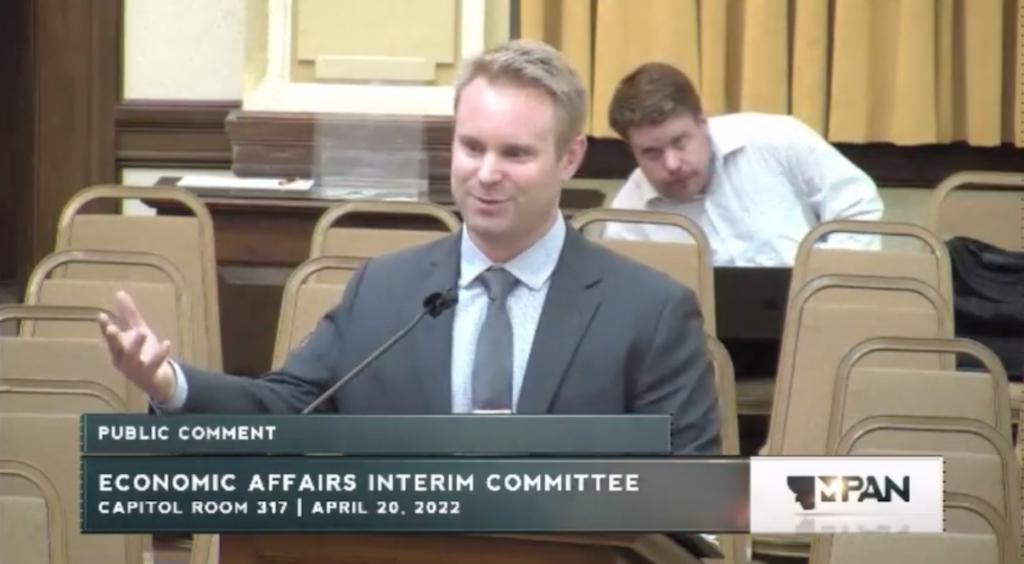Two Opportunities To Secure Privacy In Montana
"Privacy–it’s something deeply entwined with what it means to be a Montanan, but in today’s ever changing technological landscape there are constantly new threats to our right to privacy."
“To be left alone is the most precious thing one can ask of the modern world.” -Anthony Burgess, Author
Privacy–it’s something deeply entwined with what it means to be a Montanan, but in today’s ever changing technological landscape there are constantly new threats to our right to privacy.
However, Montanans have two important opportunities on the horizon to further secure our privacy rights, explains Frontier President and CEO Kendall Cotton in his latest op-ed.
The first of these is something you’ve heard us talk about before, the government use of facial recognition technology. The Legislative Committee tasked with studying facial recognition has brought to light two key findings: there is very little legislative oversight over facial recognition’s use by the government in Montana and the tech’s use does provide some serious benefit to Montanans, such as through reducing unemployment fraud.
Legislators are aiming to establish balanced reforms that restrict government facial recognition use to protect privacy without outlawing it entirely. Cotton explains the benefits of this approach:
“This approach would allow Montana’s government to take advantage of facial recognition technology’s benefits, helping to make our law enforcement more effective and our state programs more efficient, without threatening the privacy rights we hold dear.”
The second opportunity will be a constitutional amendment that will ask voters this fall to amend the state’s Constitution to explicitly protect electronic data and communications from unreasonable searches and seizures by law enforcement.
“While Montana’s constitution already protects citizens from warrantless searches and seizures of their “person, papers, homes and effects,” supporters of the amendment argue that a constitutional change is needed to make sure privacy protections keep up with new technology.”
If passed, the amendment would make Montana the first state in the country with digital privacy protections in both the state Constitution and state law.
Stay tuned as we continue to cover both of these opportunities as they develop.
For Liberty,
Tanner Avery
The Latest
Old-Growth Forest Restoration
On Earth Day, President Biden issued an executive order to identify and protect America’s old-growth forests, but there is more to this issue than just spending more money.
As we have noted before, forest restoration projects are often delayed for years on end by bureaucratic processes. While these processes are often created with good intentions, the result is lengthy delays that put the forest at risk of catastrophic fire while waiting for the project to begin.
PERC policy director Hannah Downey explains the problem in this months forest management column:
“President Biden is right to identify catastrophic wildfire as one of the primary threats to these forests in his executive order and directs federal agencies to coordinate on wildfire risk mitigation activities. Throwing more money at the problem, however, won’t solve it. What policymakers need to focus on instead is reducing regulatory barriers so that more forest restoration work can be done quickly.”
Facial Recognition Testimony
As the Economic Affairs Interim Committee moves closer towards drafting facial recognition legislation, we provided testimony last week before the Committee regarding two areas lawmakers should focus on when drafting legislation:
- Law enforcement access to closed-source photo databases
- Law enforcement use of China-style continuous surveillance
Homeschooling Popularity
During COVID-19 and the mandates that came with it, parents were quick to remove their children from schooling, opting for alternatives like homeschooling. As a result our nation saw homeschooling rates increase during the 2020/2021 school year to more than 11% of the overall US K-12 population. New data from the Associated Press shows that despite a slight drop in the 2021-2022 school year, the total number of homeschooled students remains higher than pre-pandemic levels.
Our Take: The elevated number of homeschoolers shouldn’t come as any surprise, parents across the country are opting for more parental control over their children’s education. The increased demand for more schooling options should be a wake up call to Montana officials. Parents want policies that provide more educational options to fit the unique needs of their children.

